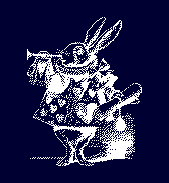The
Australian
Nordic Ski Instructor
Manual
Equipment
Equipment: [ viewpoint | waxes | skis | bindings | footwear | poles | clothing | extras | novelties ]

Instructor clothing
Probably as controversial as the choice of skis to be used by the instructor, the choice of clothing is really very simple, and yet is often poorly understood by newly-graduated instructors.
The bottom line (pun not intended) is this: as a ski instructor is in the business of teaching others how to perform physical skills primarily by imitation, then they must wear clothing that will enhance this factor. To put it yet more simply - the clothing chosen by an instructor should present a clear and unconfused body outline, so that the students may see exactly what is meant to be imitated.
Obviously, ill-fitting or baggy clothing will obscure the total body outline, but less obvious are multi-coloured clothes with confusing and contrasting stripes (unfortunately quite fashionable at the moment). Also less obvious in the ability to obscure the body outline is dark and subdued clothing (fashionable about 10 years ago, but still seen even today - old ski suits are incredibly hard-wearing!).
An ideal ski instructor suit is one that is made of a brightly-coloured body-hugging material, yet incredibly warm, windproof, and waterproof, with a contrasting stripe running uniformly down the side of the sleeves and the trouser legs. It has a complement of pockets of cavernous size (and yet invisible when closed) to hold all the goodies an instructor is expected to carry, and there would be ample space to stick the ubiquitous badges deemed essential these days. Naturally, this suit would empathise with the group of students as a whole and change colour to suit the mood of the day.
It is most important to dress according to the prevalent weather conditions (ie. responsibly), and to be prepared for any change in the weather. It is also important to make the students feel comfortable in terms of the clothes you wear (after all, they have to look at them all day - you don't).
Skin-tight racing suits may well show the body outline all too clearly, but some students may feel threatened or intimidated by this mode of dress. On the other hand, some may respect your ability, and feel that they are getting their money's worth by someone who obviously treats her/his job seriously and professionally. However, one must have an ability that students can respect, and no amount of flashy clothing will help if you cannot perform!
Interestingly, most other skiing countries accept that instructors are professionals who wear a particular set of specialist clothing - just as surgeons, policemen, doctors, airline pilots, and other professionals wear clothing that is appropriate to their activity. Practical considerations aside, one could argue that all these people could perform their jobs in 'normal' clothes, yet their positions and abilities are reinforced by what they wear, both in the eyes of their peers, and with whom they must deal.
In Australia, the general public have yet to be convinced that Nordic ski instruction is worthy of being called a 'profession', and in many ways this is augmented by the attitudes that some instructors have with respect to instructor clothing and appearance. Whilst it is important to empathise with those you teach, that empathy should not conflict with the main task at hand - your ability as an instructor to demonstrate clearly the skills which they hope to attain.
Equipment: [ viewpoint | waxes | skis | bindings | footwear | poles | clothing | extras | novelties ]
©2013 Ivan Trundle
ivan@itrundle.com.nospam [remove the '.nospam' from address]
[ Contents | Preface | Organisation | Teaching | Techniques | Equipment | Resources | Appendices | Glossary | Index ]
